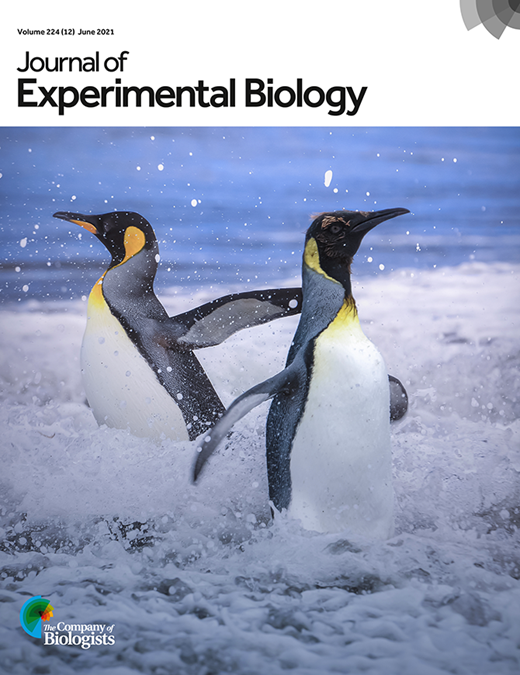Ver ítem
- xmlui.general.dspace_homeCentros Regionales y EEAsCentro Regional Patagonia NorteEEA BarilocheArtículos científicosxmlui.ArtifactBrowser.ItemViewer.trail
- Inicio
- Centros Regionales y EEAs
- Centro Regional Patagonia Norte
- EEA Bariloche
- Artículos científicos
- Ver ítem
Habituation in mosquito larvae Aedes aegypti is context-specific
Resumen
Mosquito larvae live in water and perform a stereotyped escape response when a moving object projects its shadow on the surface, indicating potential risk of predation. Repeated presentations of the shadow induce a decrease in the response due to habituation, a form of non-associative learning defined as the progressive and reversible decrease in response to a specific reiterative innocuous stimulus. Nevertheless, habituation can be context-specific,
[ver mas...]
Mosquito larvae live in water and perform a stereotyped escape response when a moving object projects its shadow on the surface, indicating potential risk of predation. Repeated presentations of the shadow induce a decrease in the response due to habituation, a form of non-associative learning defined as the progressive and reversible decrease in response to a specific reiterative innocuous stimulus. Nevertheless, habituation can be context-specific, which indicates an association between the context and the stimulus. The aim of this work was to study context-specificity in habituation in mosquito larvae Aedes aegypti. Larvae were individually placed in Petri dishes. Underneath, black, white or black-white striped cardboards were placed as backgrounds (visual context). Larvae were presented with a shadow produced by a cardboard square (training) over the course of 15 trials. After the fifteenth trial, the background was shifted and the stimulus was presented once again (test). To analyse habituation in different contexts, we developed a series of learning curve models. We performed a Bayesian model selection procedure using those models and the data from the experiments to find which model best described the results. The selected model was a Power-Law learning curve with six parameters (habituation rate, context-specific asymptotic habituation response -with Journal of Experimental Biology • Accepted manuscript
one parameter per context, i.e. 3 parameters-, response-increase, and autocorrelation) describing the whole experimental setup with a generalised r2 of 0.96. According to the model, a single habituation rate would indicate that habituation was independent of the context, whilst asymptotic habituation would be context-specific. If the background was shifted after training, there was an increase in the response in the test, evincing context specificity in habituation.
[Cerrar]

Autor
Pietrantuono, Ana Laura;
Aguirre Urreta, María Beatriz;
Bruzzone, Octavio Augusto;
Guerrieri, Fernando J.;
Fuente
Journal of Experimental Biology 224 (12) : Art.242351 (2021)
Fecha
2021-06
Editorial
The Company Biologists
ISSN
0022-0949
1477-9145
1477-9145
Formato
pdf
Tipo de documento
artículo
Palabras Claves
Derechos de acceso
Embargado
 Excepto donde se diga explicitamente, este item se publica bajo la siguiente descripción: Creative Commons Attribution-NonCommercial-ShareAlike 2.5 Unported (CC BY-NC-SA 2.5)
Excepto donde se diga explicitamente, este item se publica bajo la siguiente descripción: Creative Commons Attribution-NonCommercial-ShareAlike 2.5 Unported (CC BY-NC-SA 2.5)

